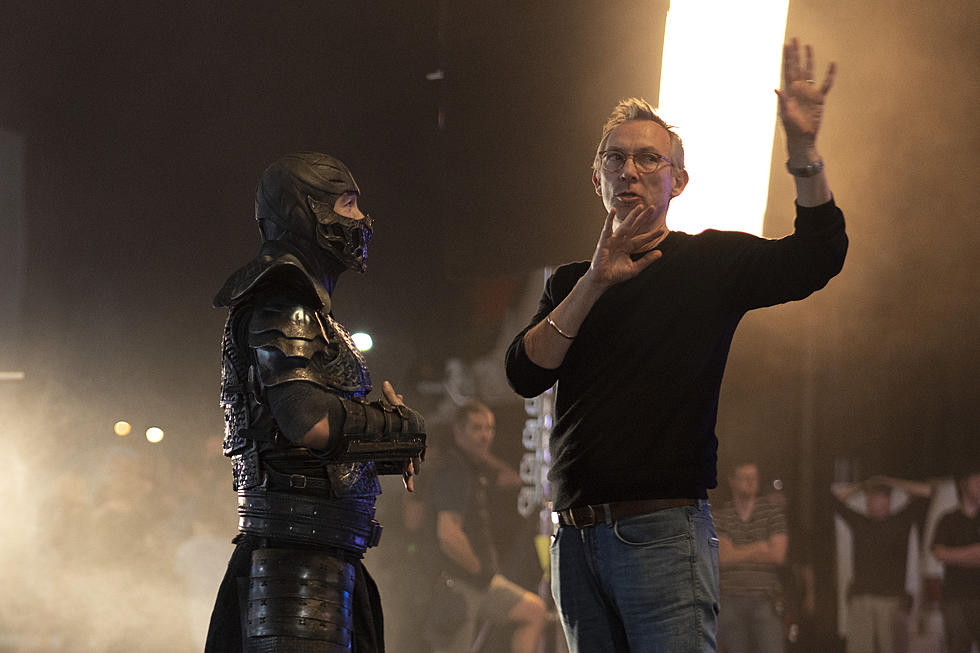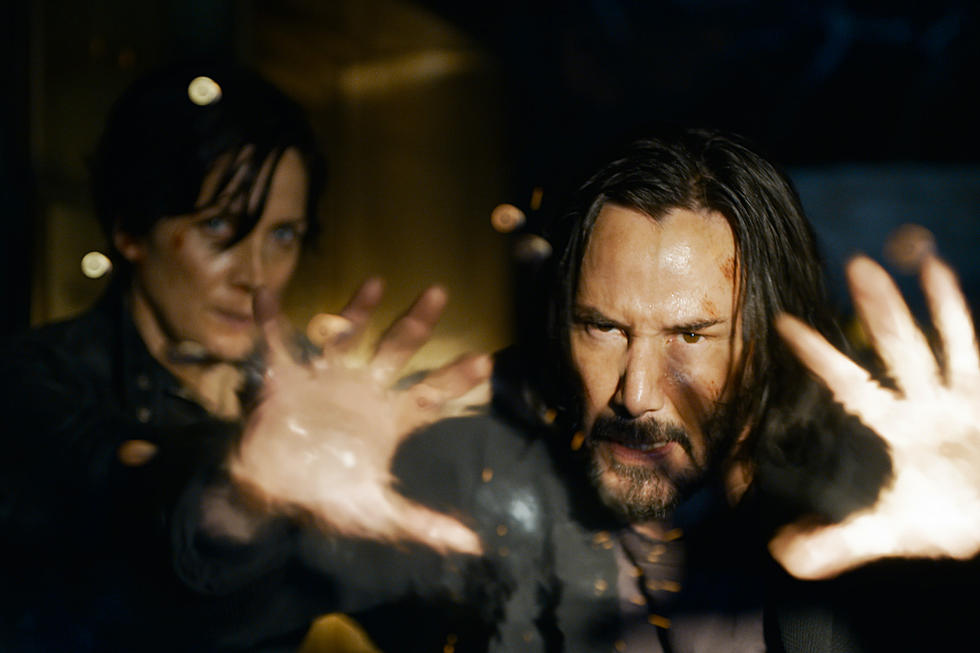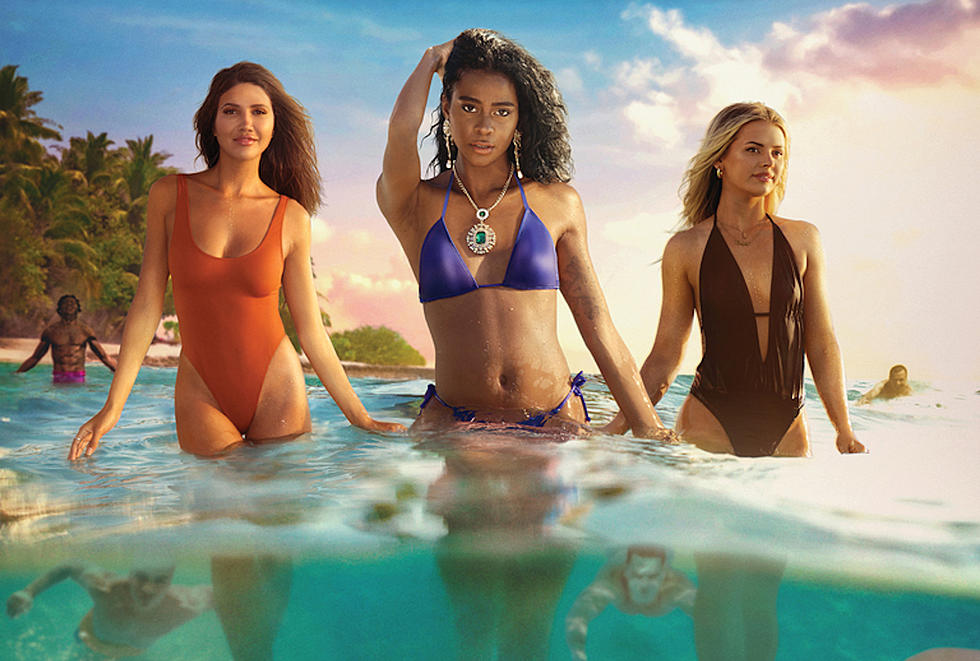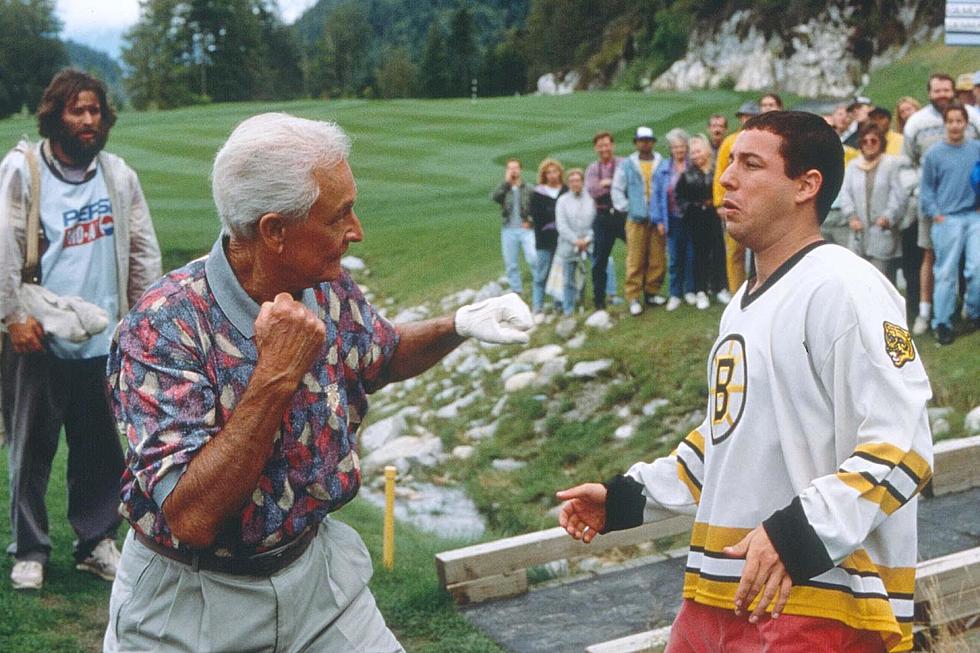
Interview: Simon McQuoid On Krafting a New ‘Mortal Kombat’ And How Close They Came to NC-17
The MPAA gave the new Mortal Kombat film an R rating for “strong bloody violence and language throughout, and some crude references.” They’re not kidding about the “strong” part. Just like the Mortal Kombat video games, the film features graphic “Fatalities.” Heads get slashed, they get sliced in two, they get smooshed. Basically if you are a head in this movie, you are in deep trouble.
As a result, Mortal Kombat more than earns the first R rating in this big-screen franchise. (Both 1995’s Mortal Kombat and 1997’s Mortal Kombat: Annihilation were rated PG-13.) According to director Simon McQuoid, achieving an R-rating — and not going overboard into NC-17 territory — is something they “discussed a lot” during production.
“We made sure we were trying to land in a tonal space that we were happy with,” McQuoid told me during a recent phone conversation. “If you’ve played the game, you know that it’s pretty full-on. And there are certain things in the game that I think couldn’t be brought to the screen, that would have pushed us over the edge.” Keeping that in mind, McQuoid was able to calibrate his Mortal Kombat for an R. “We gave [the MPAA] the film that we wanted,” he explains, “and we got the rating we wanted.”
For McQuoid, a first-time feature director, making Mortal Kombat involved years of that sort of meticulous planning. During our conversation, he also told me how he and the writers arrived at the cast of characters they chose, why they added a totally new hero to the roster (Lewis Tan’s Cole Young, an MMA fighter who becomes the focal point of a new Mortal Kombat tournament), and why he thinks Hollywood has had so much trouble over the years adapting video games to the big screen.
ScreenCrush: There are already two Mortal Kombat movies, along with who knows how many comics, cartoons, and web series. And that’s on top of all the video games. What did you think another film could add to that universe of Mortal Kombat kontent? (Kontent spelled with a K of course.)
Simon McQuoid: [laughs] I’ve never seen so many Ks in my life.
Well, I feel like the thing that drew me to the script and the opportunity was carving out a new space for all of those things that you’ve mentioned. In that, I felt that there was an opportunity to elevate this material into a big cinematic version of itself. And that was really the task; to take the material, study it, elevate it, and bring it into this tonal space which feels epic and a bigger scale then it’s been done before. So it wasn’t so much a question of altering the source material to create something new. It was creating something new by interpreting the source material through that more cinematic, bigger-scale lens.
And is what you’re describing how you chose which characters to include? Because at this point there are dozens of Mortal Kombat fighters. How do you pick which to feature, which to include in smaller roles, and which to remove completely?
A few decisions were made before I became involved. There was a script written that got sent to me. I mean, it’s changed a bit since then. If you look at the sliding scale of what Mortal Kombat is and where it’s come from and where it is today, what the guys of NetherRealm [the studio that creates the Mortal Kombat games] have so beautifully done, it has this history that starts with a classic set of characters, and then it evolves, as you say. There are many, many characters now to draw from. So it was really just about respecting the origins of the very first game and then seeing where we could take it, and seeing what new characters could be folded into it. And then also just a matter of balancing and calibrating those characters all the time, which is the thing that really kept me up at night, to be honest, was making sure that each of these are very revered and important characters was getting a moment in a very densely packed ensemble.
Most of the characters were quite an obvious choice. The classic ones, and then we had a few of the others that came in. And each of them had their own little set of reasons. Nitara’s there because we felt it would be interesting to have a character fly around. Kabal we felt we could create an interesting, really powerful-looking iteration of this character. There’s something really exciting to me about taking something that they’ve done a certain way and ... I keep on using this word, but elevating or just refashioning it into a place where it has a sense of power and awesomeness to it.
Then you added a totally new character at the center of all those other Mortal Kombat staples, which I thought was an interesting choice. What went into the decision to make this new fighter the focal point?
It happened for a couple of reasons. First of all, we felt there was precedent, because Mortal Kombat has brought in so many new characters over the years. Each iteration gets some new characters. So we felt like it was a Mortal Kombat thing to do to bring in a new character. They started with less than 10, then it became somewhere around 80-something characters now. So that didn’t feel particularly controversial as a move, for us, because of that. We also felt like we wanted the new audience to be brought through the story and learn as the audience learns. And for those, for those reasons together, we felt that was the right thing to do.
Was NetherRealm involved in the creation of Cole? Do they want to use him in future video games?
You’ll have to ask them the last part of that question. They weren’t involved in developing the new character. That was squarely on us; on the studio, on New Line. And those guys were dealing with the guys at NetherRealm, And I had a few chats with Ed Boon as well. So there were some conversations along the way, but New Line were firmly in charge of that process of the new character.
Out of all the characters, and even specific movies or Fatalities, was there one that was the trickiest to get right in terms of staying true to the video game while also balancing what looks right in live-action? In any other movie, if something doesn’t work, you just cut it out. Here, you’re trying to capture the essence of this very well-known video game in another medium.
They all had their own version of that tricky creation. One thing that was important to Greg Russo, the writer, and I was to make sure that Kung Lao’s hat had a role in the film. That’s a really interesting device, and it defines him. So certainly the Fatality around Kung Lao and his hat, was something that added another layer of design and development within the actual blocking and creation of that little moment in the film. That in itself had multiple layers going on, because we had to do justice to the hat, then do justice to the Fatality that happens pretty soon after that.
Jax and Reiko; that one, there was a lot of planning and development of something that goes by pretty quick. We shot a lot of live-action plates to get the material to make that look and feel real. We experimented with the visual effects. Each one of them had its own set of tricky things we needed to navigate. As you say, we were honoring things that existed. For instance, with Jax and Reiko there’s that shot behind Jax with his arms out very wide. That’s as important in the whole sequence as probably any other shot, because it’s really about Jax’s energy. Each Fatality is really about the character that is performing the Fatality. So in pursuit of getting the actual death part correct we didn’t want to lose sight of the hero and what they were doing. Each one has its own set of moving parts within it.
Through the years, Hollywood has had a lot of trouble adapting video games to movies. A few years ago, I watched every video game adaptation ever made; that was not the most pleasant assignment of my life, I will tell you. You’ve now made something that’s already way up on the list of best video game adaptations, so I ask you: Why has it been such a struggle historically for studios to adapt video games to movies?
I don’t really know. I certainly don’t profess to have the secret sauce on that particular thing. We felt from the start of this process that we were really trying to respect the material and not ignore it. And we really spent a lot of time analyzing and thinking about what mattered to the fans, and what this property really is. Perhaps sometimes what I’ve observed in other video game adaptations, certainly some of the less successful ones, they don’t tend to do that. They think they can run away from the material and do whatever they like with it. And it just doesn’t get respected and elevated enough.
But there’s been some good examples. I think Detective Pikachu was a really, really well-made film. I think also perhaps helps when you’ve got really, really strong characters — like Pikachu is obviously a strong character. It's the nature of the way that game and that that world works. But defining and talking about characters, you're not necessarily talking about video game engines or video game constructs.
Mortal Kombat is a video game built upon characters. What you're really doing is you're focusing on the things that you should be focusing on when making a film, and that's the characters. So perhaps it’s just that the best video game adaptations are the ones that really focus on characters. It’s also important that then you’re not taking too much out of the video game. Like thinking “All right, what are the things we need to take? And what are the things we don’t need to take?” Sometimes I believe it's not the executional aspects within the video game, what you're taking is the core raw material, and then you apply a filmmaking process to it. It's not even something that we necessarily talked about a great deal. We just tried to make the best film we could.
I’m not the most knowledgable Mortal Kombat fan in the world, but even I spotted some fun Easter eggs and references to the games sprinkled throughout. Is there one of those you were particularly happy with?
The controller moves as graffiti in the background, just as Jax swings around to see Sub-Zero close up. I think I was quite happy with that one. That works quite nicely.
There’s just so much to work with. That was what was great about it. There was always such a dense treasure trove of stuff to work with that we spent a lot of time thinking “Okay, where can we put this? Where can we put that?” Obviously a lot of stuff didn’t get in there, but there was a lot of work with. That was really a very enjoyable part of the process.
Mortal Kombat is in theaters and available on HBO Max on April 23.
Gallery — The Best Movie Titles in History:
More From Sasquatch 107.7 - The Rock of Rochester










